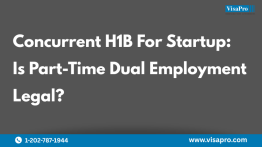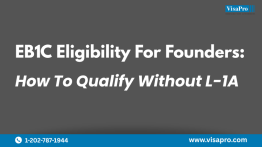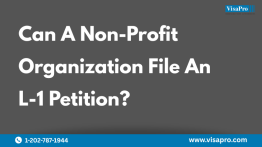Quick Summary:
Facing your H-1B max-out can feel overwhelming, but you have options! This guide offers clear, empathetic advice on extending your H-1B beyond six years. Discover crucial deadlines, avoid common pitfalls, and confidently navigate your path to continued U.S. residency.
Your Legal Options to Stay Beyond 6 Years on H-1B
Clear Answer: Yes, H-1B extensions beyond six years are available through either the 365-day rule (if your PERM or I-140 was filed at least 365 days before H-1B expiry) or through an approved I-140 with a retrogressed priority date.
Extensions are granted under AC21 legislation. The 365-day rule allows 1-year extensions; an approved I-140 allows 3-year increments if your priority date is not current. Without meeting either condition, extensions beyond six years are not possible unless you can recapture time spent outside the U.S.
Many H-1B workers mistakenly believe the process is automatic. It is not. Extensions depend on precise legal triggers, and a missed deadline can lead to status expiration. The following cases illustrate the danger:
Case #1: Vinay’s Miscalculation
Vinay, an Indian software developer, assumed his employer’s pending I-140 filing would allow for an extension. However, the PERM had been filed just 11 months before the end of his 6th year. Since the 365-day rule was not met and the I-140 was not approved before his H-1B expired, he had to leave the U.S.
Case #2: Anna’s Smooth Extension
Anna, a nurse from the Philippines, had her I-140 approved in her 5th year. Despite retrogression, her employer used the I-140 approval to secure a 3-year H-1B extension—keeping her employment and residency in the U.S. uninterrupted.
Checklist to Extend H-1B:
- Was PERM or I-140 filed 365+ days before your 6th-year end? → 1-year extension OK
- Is I-140 approved & priority date not current? → 3-year extension OK
- If neither applies → Consult immigration legal counsel immediately
Why Timing Matters More Than Ever: Key Deadlines to Watch
Clear Answer: To secure H-1B extensions or green card eligibility, your PERM or I-140 must be filed well in advance, ideally started by your 4th year of H-1B and filed at least in your 5th year of H-1B.
With PERM processing times exceeding 12 months and EB-3 retrogression affecting all countries, failing to plan early can cause devastating setbacks. You risk losing H-1B status or being forced to depart the U.S.
Case #3: Elena’s Critical Delay
Elena, an accountant, had her PERM filed 8 months before her H-1B maxed out. Due to DOL delays, the certification came too late, and her I-140 couldn’t be filed in time. She was forced to leave the U.S. and re-enter months later, creating significant hardship for herself, her family, and her employer.
Tip: Begin the PERM process by your 4th year on H-1B. Earlier is better.
Step-by-Step:
- Track your H-1B start and max-out dates, keeping in mind that any time spent outside the U.S. does not count toward the six-year limit.
- Subtract 365 days from that expiration.
- Aim to have PERM filed well before that mark.
The Impact of EB-3 Retrogression: A Nationwide Challenge
Clear Answer: EB-3 retrogression now affects all countries, meaning even applicants outside of India and China are experiencing delays in their green card eligibility.
Previously, green card queues were long primarily for Indian and Chinese nationals. However, the Department of State’s visa bulletin now shows significant EB-3 backlogs even for traditionally low-demand countries.
Case #4: Lucas from Brazil
Lucas was confident about his EB-3 green card as a systems analyst. But in late 2023, his priority date was retrogressed by over a year. Despite I-140 approval, he couldn’t file adjustment of status. Luckly, his employer was able to extend his H-1B for 3 years due to retrogression.
Tip: Always check the monthly Visa Bulletin. Don’t assume priority dates will remain current.
Misconception Alert: Some believe retrogression affects only a few nationalities. In truth, any nationality can be affected when demand spikes or quotas tighten.
Common Myths That Could Jeopardize Your Status
Clear Answer: Believing that an approved I-140 or late-filed PERM guarantees safety is dangerous. Both must be properly timed, filed, and maintained.
Top Misunderstandings:
- “I’ve left my employer but I have an approved I-140, so I can relax.”
- Not if your priority date is current and you haven’t filed adjustment of status.
- “I can switch employers and keep my green card process going.”
- Not unless the new employer files a new PERM and I-140.
- “I can file PERM any time before the 6th year.”
- Must be 365 days before end of H-1B period.
Case #5: Ravi’s Startup Snag
Ravi, an AI engineer at a startup, had just 14 months left. His employer didn’t understand the urgency of PERM timelines and began too late. PERM delays led to missed deadlines, and Ravi had to leave the U.S. despite being a critical team member.
Tip: Confirm all assumptions with your immigration attorney. Never rely on employer guesses or hearsay.
What to Do If You’re Nearing H-1B Max-Out Without Extension Eligibility
Clear Answer: If no extension path is available, you must change to another nonimmigrant visa status or leave the U.S. before your H-1B expires.
If you leave the U.S., you may return:
- On a 1-year H-1B, if your PERM or I-140 was filed at least 365 days prior to your return
- On a 3-year H-1B, if your I-140 has been approved
Leaving doesn’t mean abandoning your case. You can continue your green card journey while abroad.
Case #6: Zainab’s Strategic Exit
Zainab, a Nigerian financial analyst, had no extension path before her H-1B expired. She left the U.S., waited for I-140 approval, and then returned with a 3-year extension. Her careful planning avoided legal complications and preserved her career path.
Checklist:
- Ensure PERM and I-140 continue processing while abroad
- Stay in touch with employer and attorney
- Prepare documents for visa stamping
Tip: If you travel, keep detailed records of exit and reentry dates. These may be crucial for future filings.
Employers: Don’t Wait Until It’s Too Late
Clear Answer: Employers must begin the green card process no later than the 4th year of H-1B, track deadlines meticulously, and budget for premium processing when needed.
Your sponsorship delays can directly impact employee retention, productivity, and even operational continuity, especially in tech, healthcare, education, and research sectors.
Practical Tips for Employers:
- Create internal immigration timeline trackers
- Engage experienced immigration counsel, not just HR generalists
- Allocate budget for legal and government fees early
Case #7: College Hospital’s Nurse Crisis
A small hospital delayed green card filings for multiple H-1B physicians. Three had to leave due to missed deadlines, leaving critical vacancies unfilled during the winter surge. With proper planning, these extensions could have been secured.
Take the Next Step: Expert Help Is Just a Call Away
Navigating H-1B extension rules, PERM deadlines, and EB-3 retrogression is not something you should do alone. At VisaPro, our seasoned immigration attorneys help thousands of professionals and employers develop compliant, proactive strategies to avoid disruptions and achieve permanent residency.
Schedule your complimentary 10-minute assessment to:
- Evaluate your H-1B extension eligibility
- Strategize your green card process
- Avoid costly mistakes and interruptions
https://www.visapro.com/service-options/visa-assessment/
Frequently Asked Questions (FAQs)
1.Can I extend my H-1B after 6 years if my I-140 is approved but my priority date is not current?
Yes. If your I-140 is approved and your priority date is retrogressed, you qualify for a 3-year H-1B extension beyond the 6-year limit.
2.Can I extend my H-1B after 6 years if my I-140 is approved, but my priority date is current?
Yes. If your I-140 is approved and your PERM was filed more than 365 days ago, you may qualify for a 1-year H-1B extension beyond the 6-year limit.
3.What happens if my PERM is filed late and I don’t qualify for any extension?
You may need to leave the U.S. before your H-1B expires. Once your I-140 is approved, you can return with a new 3-year H-1B extension.
4.Can I change employers and keep using my I-140 for H-1B extensions?
Yes. As long as your I-140 was approved for at least 180 days, you can continue to use that I-140 to obtain an H-1B extension indefinitely. You can also retain your priority date. The new employer will need to file a new PERM and I-140 for you to proceed with adjustment of status.
5.How can I check if my priority date is current?
Check the U.S. Department of State Visa Bulletin every month. Compare your I-140 priority date with the chart to determine if you’re eligible to file for adjustment.
6.What’s the safest timeline to start the green card process?
The ideal time is no later than the middle of your 4th year on H-1B. This ensures enough buffer for PERM delays and I-140 processing before reaching the 6-year limit.







